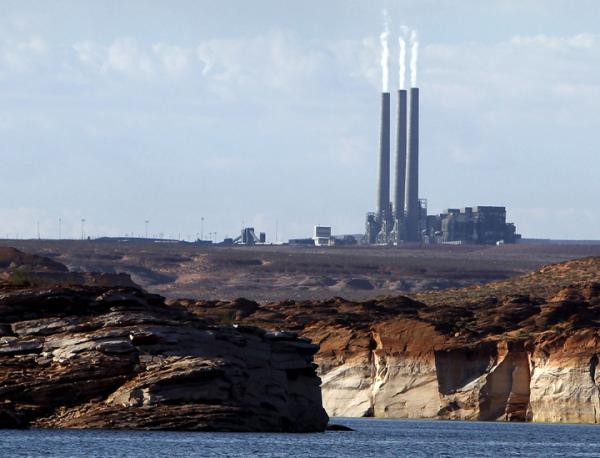
Source: Indian Country Today Media Network
The electricity delivery from the Navajo Generating Station will continue well into the future – while achieving significant air pollution reductions.
That was the announcement made this morning by the Department of the Interior, which said it is part of an agreement that was reached to continue the services of NGS.
That agreement was signed by the Department of the Interior, Central Arizona Water Conservation District, Navajo Nation, Gila River Indian Community, Salt River Project, Environmental Defense Fund, and Western Resources Advocates.
With the agreement came a proposed “Reasonable Progress Alternative to BART,” that was submitted to the United States Environmental Protection Agency today for consideration in developing the final Best Available Retrofit Technology (BART) rule for NGS.
“This consensus agreement among a very diverse group of interested parties is nothing short of historic,” said Assistant Secretary for Water and Science Anne Castle in a DOI press release. “Through collaboration and cooperation, this innovative proposal will not only significantly reduce harmful emissions, it will also mitigate the plant’s carbon footprint and ensure continued generation of electricity that helps power the local economy.”
NGS, while being the largest coal-fired power plant in the West, is also the single sources of nitrogen oxide air pollution in the country, contributing to ozone and fine particle pollution in the region – home to the Grand Canyon and 10 other national parks and wilderness areas according to the release. Another significance for the NGS is that it provides more than “90 percent of the power for the Central Arizona Project (CAP), the state’s primary water delivery system, and plays a critical role in numerous tribal economies.”
The EPA in February issued a proposed BART rule for NGS to meet Clean Air Act legal mandates, recognizing the important role NGS plays on the regional economy, the EPA invited alternative proposals. According to the release, a Technical Working Group that consists of NGS owners, the DOI, affected tribes and other interested parties came together and submitted a supplemental proposal. “The group worked to address the concerns of many diverse interests in the plant and to provide the best path forward for all parties, in a manner that reflects current and future economic and environmental considerations,” the DOI release states.
Emissions of nitrogen oxide and carbon dioxide will be significantly reduced under the agreement, while maintaining essential operations at NGS into the future.
Key items within the agreement are:
–An 11.3 million metric tons, or 3 percent annually, carbon dioxide emissions reduction no later than December 31
— 80 percent clean energy by 2035 for the U.S. share in NGS
— $5 million Local Benefit Fund for community improvement projects within 100 miles of NGS or the Kayenta Mine, which supplies coal to NGS.
— Development of a 33-megawatt solar energy facility for the Gila River Indian Community
— DOI will provide copy00 million over 10 years, beginning in 2020, to provide financial assistance to tribes in Arizona that rely on water from the Central Arizona Project.
The release states “[t]he agreement reached today will further the objectives set forth in the Joint Statement to find ways to produce ‘clean, affordable and reliable power, affordable and sustainable water supplies, and sustainable economic development, while minimizing negative impacts on those who currently obtain significant benefits from NGS, including tribal nations.’”
Read more at http://indiancountrytodaymedianetwork.com/2013/07/26/historic-agreement-reached-navajo-generating-station-150606
